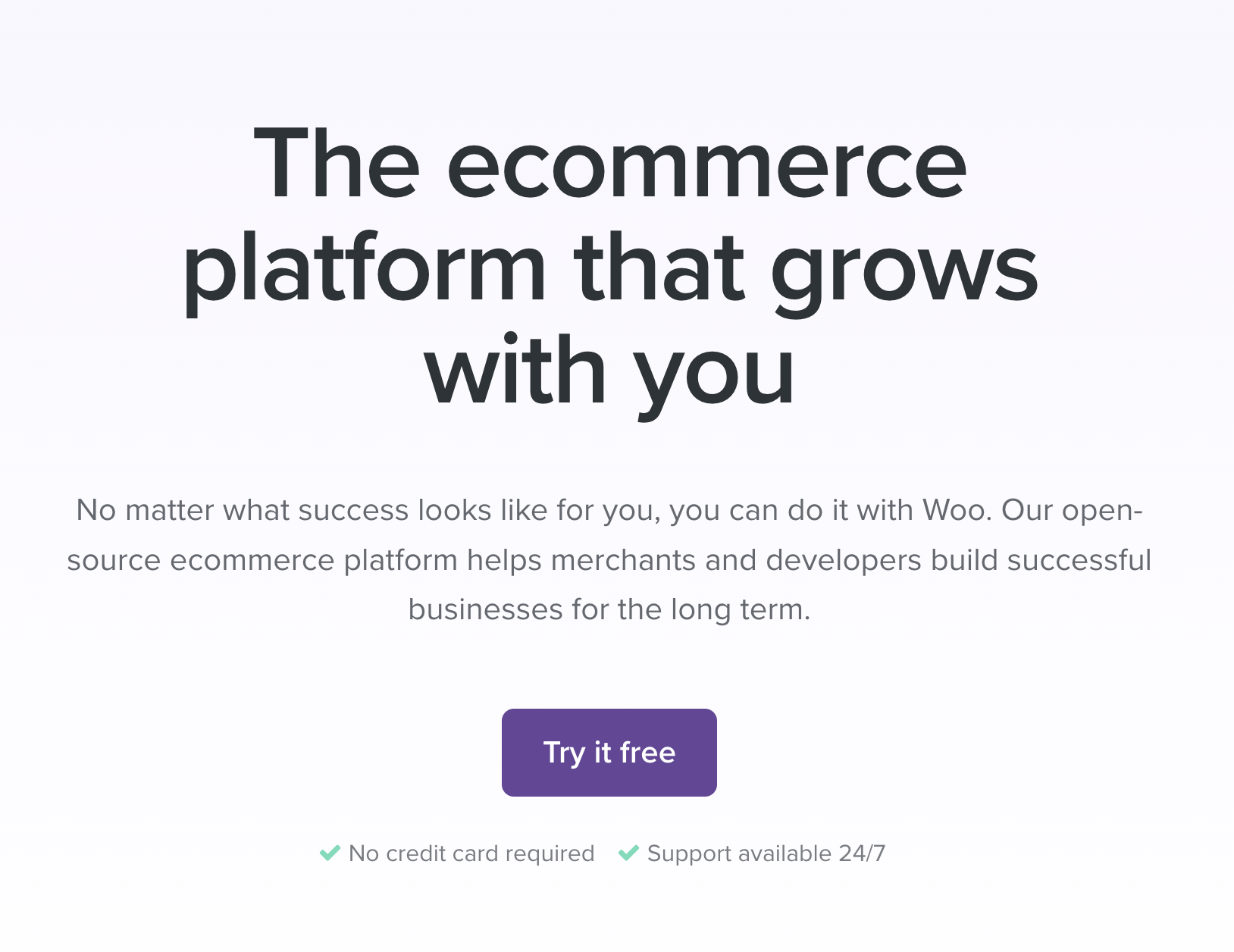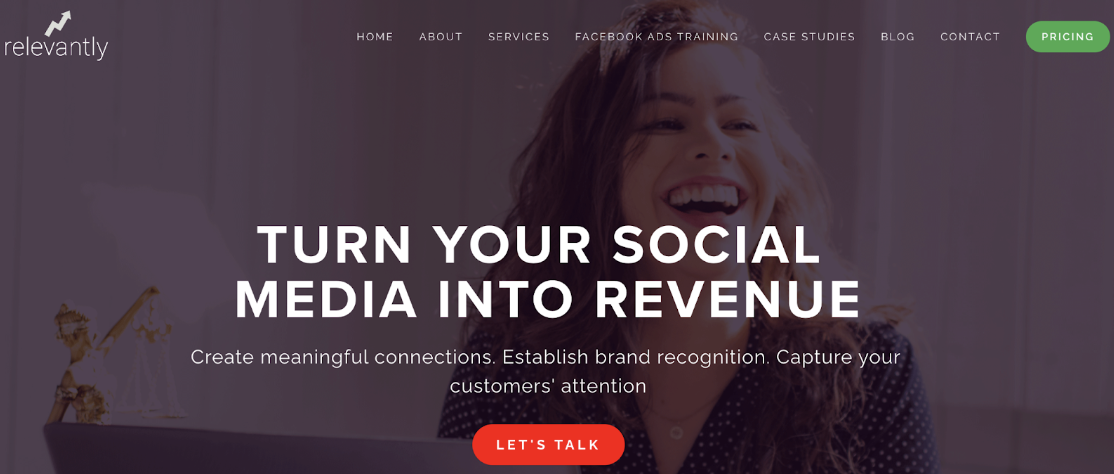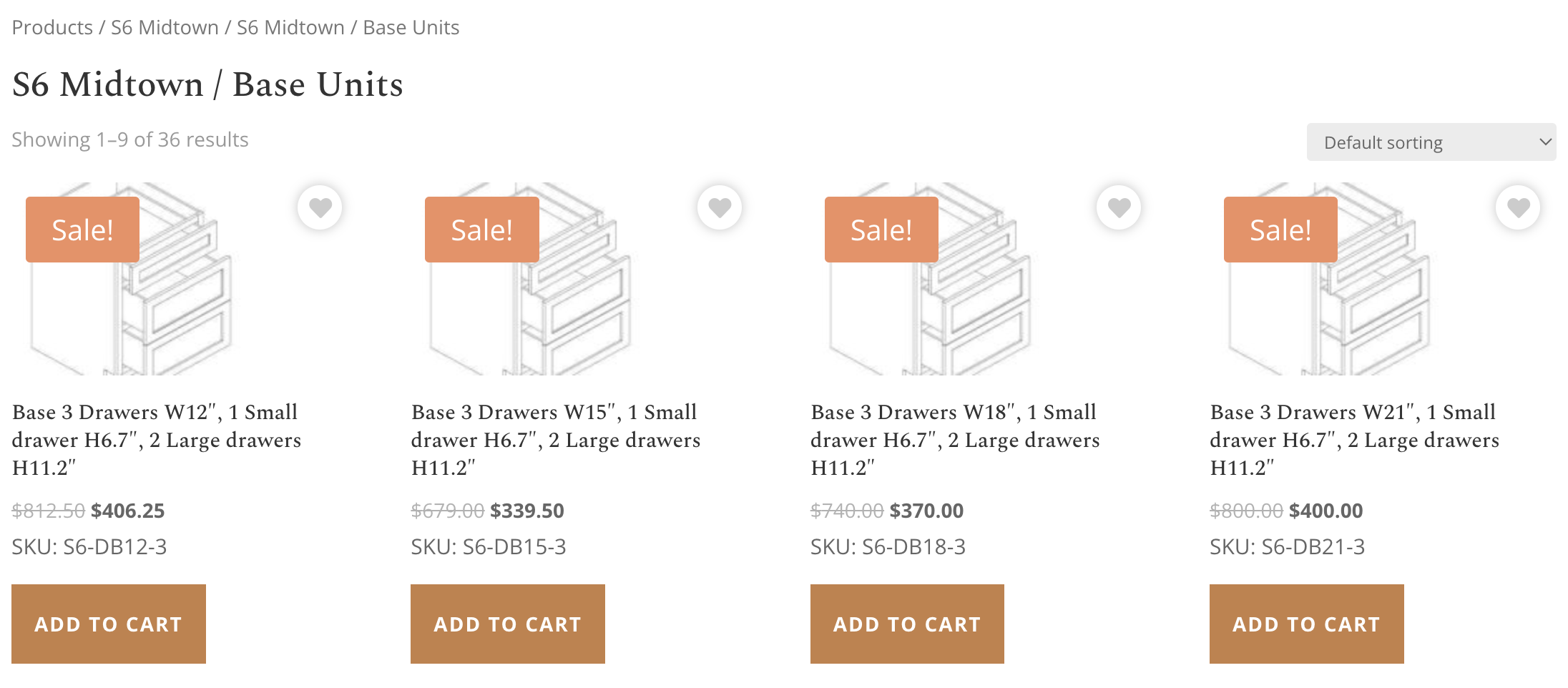Maximizing E-commerce Revenue: Unleashing WooCommerce's Sales Potential
WooCommerce is an open-source e-commerce platform for WordPress that's free to use and ready to quickly start selling online. The flexibility of this software, combined with its huge community support, makes it a great option for all kinds of merchants. However, if you're looking to raise your sales as quickly as possible, then there are plenty of techniques and tools that you can use to optimize your store's performance.
The platform is also compatible with many third-party extensions that organically add e-commerce to the website, either by integrating new features or enhancing existing ones (more on this later).
This article will outline the five key areas that can help you maximize your e-commerce revenue. It's important to keep in mind that there is no one-size-fits-all approach to increasing profits. You need to be flexible and willing to experiment with different strategies until one finally works for your business. But if there's one thing we know from experience? It's that these tips work!
Click on each link to jump ahead:
- Optimizing Product Listings and Descriptions
- Enhancing User Experience and Navigation
- Implementing Effective Pricing Strategies
- Leveraging Cross-Selling and Upselling Techniques
- Streamline the Checkout Process
If you have any questions about e-commerce and how to unleash WooCommerce’s sales potential, contact us.
1. Optimizing Product Listings and Descriptions
What are you waiting for? Click the image above and try out WooCommerce!
Optimizing product listings and descriptions is a crucial step in maximizing your e-commerce revenue.
A) Optimize for Search Engines
When you optimize your product listings and descriptions for search engines, you’re ensuring that your products appear higher in search engine results pages (SERPs). This is crucial because a significant portion of online shopping journeys begin with a search on platforms like Google.
By using relevant keywords, meta-tags, and structured data, you increase the visibility of your products, which in turn drives more organic traffic to your e-commerce website. After all, the more potential customers can find your products easily, the higher the chances of generating sales.
B) Optimize for Humans
While search engine optimization (SEO) is important, it's equally vital to remember that your primary audience is humans, not search engine bots. Your product descriptions should be engaging, informative, and appealing to your potential customers.
Avoid overly technical jargon that might confuse your audience. Instead, focus on crafting descriptions that provide clear and concise information about the product's features, benefits, and how it addresses the needs of the customer.
C) Optimize for Conversion
The ultimate goal of your e-commerce product listings is to drive conversions – getting visitors to actually purchase your products. A poorly-written description can hinder this process by not adequately conveying the value and benefits of the product. It might miss out on critical details that customers need to know before making a purchase decision.
By crafting descriptions that address customer pain points, highlight unique selling points, and answer common questions, you increase the likelihood of turning a visitor into a paying customer.
D) Avoid Confusion
Confusion is the enemy of conversion. If a potential customer is confused about what a product does, how it works, or how it benefits them, they are much less likely to make a purchase. Your product descriptions should provide clarity and answer any potential questions a customer might have. This clarity reduces hesitation and encourages confident purchasing decisions.
In summary, optimizing your e-commerce product listings and descriptions serves multiple purposes: it helps you rank better in search engine results, attracts human customers through compelling and informative content, increases conversion rates by providing the right information, and minimizes confusion to foster confident purchasing decisions. Remember that this process requires a balance between SEO tactics and human-centred content creation to achieve the best results in terms of revenue generation.
2. Enhancing User Experience and Navigation
Create a user-friendly home page that is easy to navigate like Relevantly has done!
enhancing the user experience and navigation for e-commerce is crucial for keeping visitors engaged, increasing conversions, and ensuring repeat business. Here are some strategies you should implement to enhance the user experience and navigation:
- Responsive Design: Ensure your e-commerce website is responsive, meaning it adapts seamlessly to different screen sizes and devices, including smartphones, tablets, and desktop computers. A responsive design guarantees that users can easily navigate and interact with your site, regardless of the device they're using.
- Streamlined Navigation: Create a logical and intuitive navigation structure. Use clear categories, subcategories, and filters to help users quickly find what they're looking for. Implement breadcrumb navigation to provide context and allow users to backtrack easily.
- Search Functionality: Incorporate a robust search bar prominently on your website. A well-designed search function with auto-suggestions and filters can help users locate products faster, even if they don't want to browse through categories manually.
- High-Quality Images and Videos: Include high-resolution images and, where applicable, videos that showcase your products from different angles. This helps users get a comprehensive view of what they're considering buying, reducing uncertainty and increasing confidence in their purchasing decisions.
- Product Reviews and Ratings: Display genuine customer reviews and ratings for your products. User-generated content adds credibility and aids potential buyers in understanding the quality and value of your products.
- Clear Call-to-Action (CTA) Buttons: Along with having a clear CTA, ensure that CTA buttons are strategically placed, contrasting in colour, and labelled with actionable text. Use text like "Add to Cart," "Buy Now," or "Learn More" to guide users toward the desired actions.
- User-Friendly Checkout Process: Simplify the checkout process as much as possible. Implement a guest checkout option, minimize the number of steps required to complete a purchase, and provide progress indicators to keep users informed about where they are in the process.
- Personalization and Recommendations: Utilize data-driven personalization to suggest products that align with a user's preferences and browsing history. This can help users discover products they might be interested in and encourage cross-selling and upselling.
- Fast Loading Speed: Optimize your website for speed. Slow-loading pages can lead to frustration and higher bounce rates. Compress images, use caching, and minimize unnecessary scripts to ensure fast loading times.
- Secure Payment Options: Display recognized payment gateway icons and ensure a secure checkout process. Highlight your website's security features to instill confidence in users sharing their payment information.
By incorporating these strategies, you can create a comprehensive user experience that makes navigating your e-commerce website a breeze and encourages users to make purchases with ease and confidence.
3. Implementing Effective Pricing Strategies
Do you have any items for sale? Use this image from Divine Ontario as inspiration!
Pricing is undeniably a critical factor in customers' buying decisions. It's often one of the initial considerations when customers start their research. However, it's essential to recognize that while price matters, it's not the sole factor determining whether a customer will make a purchase.
Customers consider various other factors beyond the initial price, especially when dealing with more complex or high-value purchases. These factors include:
- Cost-per-Use (or Cost per Action): This refers to the long-term value customers expect to derive from the product or service over time. For example, a software subscription might have a higher upfront cost but offers ongoing benefits that make it worth the investment.
- Service Level Agreements (SLAs): Particularly important in B2B contexts, SLAs outline the level of service and support customers can expect. Companies often consider the reliability, responsiveness, and effectiveness of the support provided.
While price may not be the only thing that matters to customers, it's often where they start their research and evaluation process and this can lead to poor pricing strategies that hurt your bottom line.
For example, let's say you're selling an ebook about how e-commerce merchants can increase revenue by using WooCommerce plugins like Gravity Forms and Divi Builder 2 Pro Theme. You could charge $500 for this course but if you do so without adding any additional services like email support or live webinars with industry experts who know their stuff when it comes to maximizing e-commerce sales potential, then there's no reason why someone would pay more than $100 (or even less) for something like this!
In this example of selling an ebook, one key point stands out. Beyond the base content, customers often perceive a higher value in products that include additional services, such as:
- Support: Providing access to experts who can help customers troubleshoot problems or make the most of the content can justify a higher price point.
- Consultations or Webinars: Live sessions with industry experts can enhance customers' learning experience and give them opportunities for interactive learning, which adds value.
- Community Access: Access to a community of like-minded individuals can provide a sense of belonging and additional insights, making the product more attractive.
Overall, pricing is indeed a significant factor in customers' purchasing decisions, but it's not the only one. Customers consider aspects such as cost-per-use, service level agreements, and additional value-added services when evaluating a product's worth. An effective pricing strategy involves understanding your target audience, communicating the value of your offering, and providing options that cater to different customer needs and budgets.
4. Leveraging Cross-Selling and Upselling Techniques

Would you like fries with that? This is one of McDonald's most common upselling techniques.
Cross-selling and upselling are important strategies for maximizing revenue. Cross-selling is the process of encouraging customers to purchase additional products or services, while upselling encourages them to upgrade their original purchase by adding more features or benefits.
Cross-selling:
Here are some examples of cross-selling techniques:
- A grocery store might offer a package deal where you can buy groceries and get a free bottle of wine with your order (a common example).
- An electronics store might offer extended warranties on TVs or other electronics items in exchange for paying an extra fee when you buy them at full price (another common example).
Here is how you can leverage these techniques:
- Product Reliance: Cross-sell products that are closely related to what the customer is already purchasing. For example, if a customer is buying a camera, suggest camera accessories like lenses, memory cards, or camera bags.
- Bundle Deals: Create pre-packaged bundles that include complementary items. Offer these bundles at a slightly discounted price compared to purchasing the items individually. Highlight the convenience and value of buying the bundle.
- Frequently Bought Together: Display a "Frequently Bought Together" section on product pages. This can suggest products that other customers often purchase in conjunction with the current item.
- Personalized Recommendations: Use customer data and browsing history to offer personalized cross-selling suggestions. Leverage machine learning algorithms to suggest products that align with the customer's preferences.
- User Reviews and Testimonials: Showcase reviews and testimonials from customers who have purchased both the main product and the cross-sell item. This adds social proof and increases the perceived value of the suggestion.
Upselling:
Here is an example of an upselling technique:
- A bank may encourage customers who open accounts with them by offering them a cash-back bonus if they deposit $5,000 into their account within six months of opening it. The idea behind these offers is that once someone has decided on an item or service, there's no reason why they shouldn't go ahead and get something else or upgrade their original purchase!
Here is how you can leverage these techniques:
- Tiered Pricing: Offer different tiers of products with varying features and benefits. Position the higher-tier options as offering better value for customers who need more advanced solutions.
- Highlight Additional Features: Clearly communicate the additional features and benefits that come with the higher-priced option. Use bullet points or visual elements to make the comparison easy to understand.
- Limited-Time Offers: Create a sense of urgency by offering limited-time discounts on the higher-priced options. Let customers know that the offer is available for a specific period to encourage them to make a decision sooner.
- Value Proposition: Emphasize the value that the higher-priced product provides. Show how it can save customers time, effort, or money in the long run, making the investment worthwhile.
- Personalized Upsells: Based on customer behaviour and purchase history, recommend upsell products that align with their preferences. For example, if a customer consistently buys premium products, upsell them to a higher-end version.
- Bundle Upsells: When customers add an item to their cart, suggest an upsell that complements the item they've chosen. For example, if they're buying a smartphone, offer an upsell for a protective case or extended warranty.
- Post-Purchase Upsells: After a customer has completed a purchase, show them a one-time upsell offer. This could be a limited-time discount on a related product that enhances their original purchase.
Remember, the key to successful cross-selling and upselling is to focus on providing genuine value to your customers. Avoid being too aggressive or pushy, as this can lead to a negative user experience. Instead, ensure that the suggested products genuinely enhance the customer's experience and solve their problems. Test different strategies, monitor results, and continuously refine your approach to find what works best for your specific audience and product offerings.
5. Streamline the Checkout Process
Ensure the checkout process is quick and easy just like Divine Ontarios.
The checkout process is the most critical step in your e-commerce journey. The better your checkout is, the more sales you'll make. Here are a few things you can do to streamline it:
- Guest Checkout Options: Allow customers to complete their purchases without requiring them to create an account. Guest checkout eliminates the barrier of creating a new account and can speed up the process for first-time shoppers.
- Progress Indicators: Clearly show users where they are in the checkout process by using progress indicators. This helps set expectations and reduces uncertainty about how many steps are left.
- Minimal Form Fields: Keep the number of required form fields to a minimum. Only ask for essential information, such as shipping address, payment details, and contact information. You can offer to save information for future purchases to encourage return customers.
- Autofill and Auto-detect: Implement autofill for common fields like addresses and credit card information. Additionally, use auto-detection to determine the user's location and pre-select the appropriate country and shipping options.
- One-Page Checkout: Consider using a one-page checkout layout where all the necessary information is displayed on a single page. This reduces the need for multiple clicks and page reloads.
- Mobile Optimization: Ensure your checkout process is fully optimized for mobile devices. Mobile users should be able to easily navigate and complete the checkout without zooming in or encountering usability issues.
- Clear Calls to Action: Use prominent and clear call-to-action buttons for each step of the checkout process, such as "Proceed to Payment" or "Place Order." Make sure they stand out visually from other elements on the page.
- Secure Payment Options: Display recognized and secure payment gateway icons. Show customers that their payment information is protected, which can boost confidence in completing the purchase.
- Order Summary: Show a clear and concise order summary that includes product names, quantities, prices, and any applicable discounts or taxes. This helps customers verify their order before proceeding.
By implementing these strategies, you can simplify the checkout process and create a more user-friendly experience for your customers, which ultimately leads to higher conversion rates and reduced cart abandonment.
Final Thoughts:
In conclusion, the world of e-commerce offers abundant opportunities for businesses to optimize their revenue potential through strategic tactics and techniques. This article has explored essential strategies to harness WooCommerce's sales potential and drive greater profitability.
WooCommerce's widespread popularity, underscored by its open-source nature and expansive community support, presents an adaptable platform for e-commerce merchants to thrive. However, maximizing revenue requires a multifaceted approach that resonates with the diverse needs and preferences of customers.
In a constantly evolving e-commerce landscape, flexibility and experimentation are essential. It's crucial to tailor strategies to your unique business and customer base, leveraging data and insights to refine your approach over time. By amalgamating these strategies, e-commerce merchants can position themselves for success in a competitive market, capturing revenue and fostering lasting customer relationships. Remember, the journey to revenue optimization is ongoing, and adaptation is key to maintaining a thriving online business.




